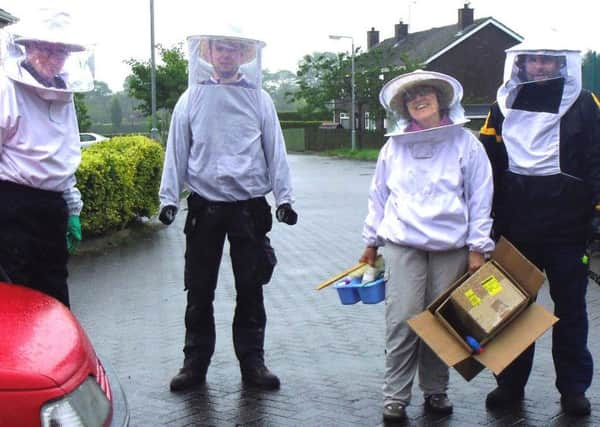Swarm response has sting in tail for Lisburn City Council


The council, however, insists it had no choice but to deal as it did with an immediate public health risk, having first made every effort to contact local beekeepers for assistance.
The incident, one of a number to make headlines in Northern Ireland in recent weeks, unfolded at Lower Ballinderry, where a swarm of bees, reportedly 30,000-40,000 strong, set up home in the chimney of a three-storey house.
Advertisement
Hide AdAdvertisement
Hide AdLisburn beekeeper and registered swarm-catcher Hugh Holmes, himself part of a team who last Friday rid an Armagh house of a swarm in the chimney, saving some 20,000 of the 30,000 bees involved, was disappointed to later learn about events at Lower Ballinderry.
“Had we known about it,” he said, “we could have coped with it, but unfortunately they took the heavy-handed approach in destroying the bees when other people are spending thousands of pounds in trying to preserve them.” While bees are not a protected species in this country, it is acknowledged their numbers are shrinking.
A spokesperson for the council, which was contacted for assistance with the removal of the bees at Lower Ballinderry, said efforts were made to avoid extermination.
“The council does keep a list of local beekeeper contact details,” she said, “so, where possible, when an infestation of bees occurs the bees can be removed safely and transferred to local beekeepers’ hives.
Advertisement
Hide AdAdvertisement
Hide Ad“On this occasion the council tried to make contact with several local beekeepers but unfortunately none were available to assist due to the complexity of access to the swarm. With the bees well established in the chimney and posing an immediate risk to the occupants, the council had no alternative but to euthanize the bees.
“Obviously this would not be the preferred course of action for Lisburn City Council but was necessary given the public health concerns to the householder and the immediate neighbours.”
Mr Holmes and his associates are currently looking at another case of an invasive bee colony at Newry and only recently Dromore beekeepers staged the rescue of a swarm from a chimney at Mount Street in the town.
“It has been a passably good summer and this is the time of year swarms tend to concentrate, around May and June,” explained Mr Holmes, who remains unconvinced by the local authority’s explanation.
Advertisement
Hide AdAdvertisement
Hide AdThe Lisburn man said he was among those the council had listed as contactable for assistance, at no cost, but he had not been approached about the Lower Ballinderry swarm and indeed, in all his time on the list, he had been contacted just once, then to deal with a swarm of hover flies.
He now means to quiz a number of councils as to how many swarms they routinely deal with and by what means.
Lisburn City Council, meanwhile, says it would be keen to hear from more local beekeepers willing to assist it with the relocation of bees in future.